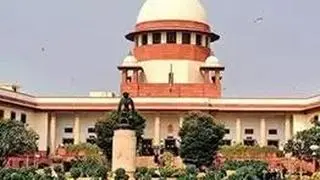Financial viability of distribution licensees, evacuation infrastructure gaps and project approvals are the constraints to utility-scale wind energy projects sourcing funds, according to senior executives in financial institutions and private equity funds.
As independent power producers take the lead in investing in the wind energy sector, the project viability is primarily dependent on their ability to sell power, even more so than incentives to attract investments.
Financial institutions are partial to projects based on feed-in (incentive) tariff because of the assured, long term revenue. But the ability of the distribution licensee to make the payment is key to sourcing funds, they said.
Mohan Kumar, Senior Director, Project Finance, IDFC, said that the ability of utilities to pay wind energy tariffs for the power supplied is the key to project viability.
In the IPP segment, equity and other funds are available. Debt too is available without major issues on competitive rates and tenor provided the investors take a `filtered’ and `measured approach’ to the project’s revenue model. Feed-in Tariff is the preferred option followed by control period based payments and captive power projects.
With the policies at the State level varied, one option is to build a basket of revenue models based on feed-in tariff, renewable energy certificates and third party sales.
Cautious investors
Phuntsok Wangyal, Vice-President, SBI Capital Markets, said financial institutions are keen on renewable energy projects but are “cautious on the preparedness of developers” to complete projects on time. Developers are attracted by the high feed-in tariffs that State Governments pay but are not always able to stick to the deadlines to avail of the tariff.
Financial health of the distribution licensee has to be looked at `keenly,’ he said. Not many utilities are attractive — Gujarat and Maharashtra are doing ‘fairly well.’ With the revenues from Renewable Energy Certificates ruled out for now, feed-in tariffs offer an attractive revenue model.
In the last three years that IPPs have come in on project finance basis. The active presence of private equity in this space is a sign of the potential in this sector, Wangyal said.
Harsh Nanda, Executive Director, Principal Investment Area, Goldman Sachs, said scale of operations and quality of the operation and maintenance service provider, which keep the project going are key considerations for investors committing funds. The range of options open on revenue are a relatively safe bet with 18-20 per cent return on feed-in tariff basis or take a bigger risk through third party sale of power. Typically, they look at a mix of options.
As a private equity fund and long term investor, growth focus and five-eight year plans with exit options are important. But when there is uncertainty in policy, “lending comfort is lost” and capital exits, he said.







Comments
Comments have to be in English, and in full sentences. They cannot be abusive or personal. Please abide by our community guidelines for posting your comments.
We have migrated to a new commenting platform. If you are already a registered user of TheHindu Businessline and logged in, you may continue to engage with our articles. If you do not have an account please register and login to post comments. Users can access their older comments by logging into their accounts on Vuukle.